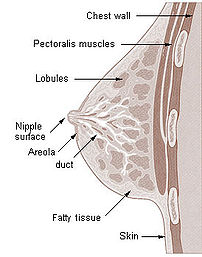 Image via Wikipedia
Image via Wikipedia[amazon_link asins=’B071RPSSL6,B01B393R2E,B01BP7LKLE,B0013N3410,0609809962,B01N2RZQTH,B00D5JDCUS,B078FSR5RH’ template=’ProductCarousel’ store=’finmeacur-20′ marketplace=’US’ link_id=’8902d2bd-e3a2-11e7-86ec-c1b902562b7b’]
Scientists have cracked the mystery of a mother’s selfless love for her child.
Science has finally cracked the mystery of a mother’s selfless love. The tenderness, intimacy and selflessness with which a mother interacts with her infant has been revered and celebrated through the ages as one of the most beautiful and inspiring manifestations of human behaviour.
Now a new study says the credit for triggering this altruistic love may go to the suckling baby.
Reported by a team of researchers from France, Italy and the UK, the work unravels the mechanism by which a nursing baby triggers a chain of chemical events that lead to a rush of the “love” hormone, oxytocin, in the brain of the mother. The findings appear in the journal PLoS Computational Biology.
Scientists have known for a while that oxytocin — also called the hormone of trust and lust — when released in the blood causes milk to be let down from the mammary glands. But they didn’t have any clue about the exact cascade of events that leads to the release of oxytocin in the brain.
What was known before the study is how a few thousand neurons, specialised to release oxytocin, are marshalled together to produce a sufficiently intense outburst during events such as childbirth, breastfeeding or even an orgasm.
“For 30 years we have known that these spurts arise because, during suckling, the oxytocin neurons fire together in dramatic synchronised bursts, but exactly how these bursts come about had puzzled us,”says Jianfeng Feng, a neuroscientist at the University of Warwick who led the study.
The scientists found that in response to suckling, the neurons start releasing oxytocin from their dendrites (protrusions on the branches for receiving electric signals from other brain cells) as well as nerve endings. The finding came as a surprise as dendrites were earlier thought to be that part of a neuron which receive rather than transmit information.
Dendrites usually create a weak network of connection between neurons. According to the researchers, the release of oxytocin from them allows for a massive spurt in communication between the neurons. This coordinates a “swarm” of oxytocin producing factories, leading to massive bursts of release at intervals of five minutes or so.
The scientists liken the event to a flock of birds or insects undertaking a closely coordinated action without a leader to guide.
“The dendrites do much more than just receive information,” Feng, who is also the director of the Centre for Computational Systems Biology at Fudan University in China, told KnowHow.
Oxytocin, the brain chemical that works as a trigger for love and affection in females, is stored in the pituitary gland from where it is discharged into the blood. Interestingly, it is released not only during a surge of maternal love but also romantic love. According to Semir Zeki, regarded as the doyen of neurobiology, oxytocin — quite like vasopressin in males — is released in the blood during a sexual orgasm. Copious amounts of oxytocin are detected in a woman’s blood during childbirth as well.
Because of the role it plays in releasing milk, the chemical is being used indiscriminately by the dairy industry to make milching animals produce even more milk. It is also used arbitrarily by some clinics and midwifes to make labour pain free, often risking the lives of babies.
Another interesting brain study recently found that this trust-building hormone reduces neuronal activity and weakens the connections in the amygdala, which serves as the brain’s fear hub.
Feng thinks similar triggers may be at work during other natural processes where abundant quantities of oxytocin are released into the blood.
Sources: The Telegraph (Kolkata, India)

